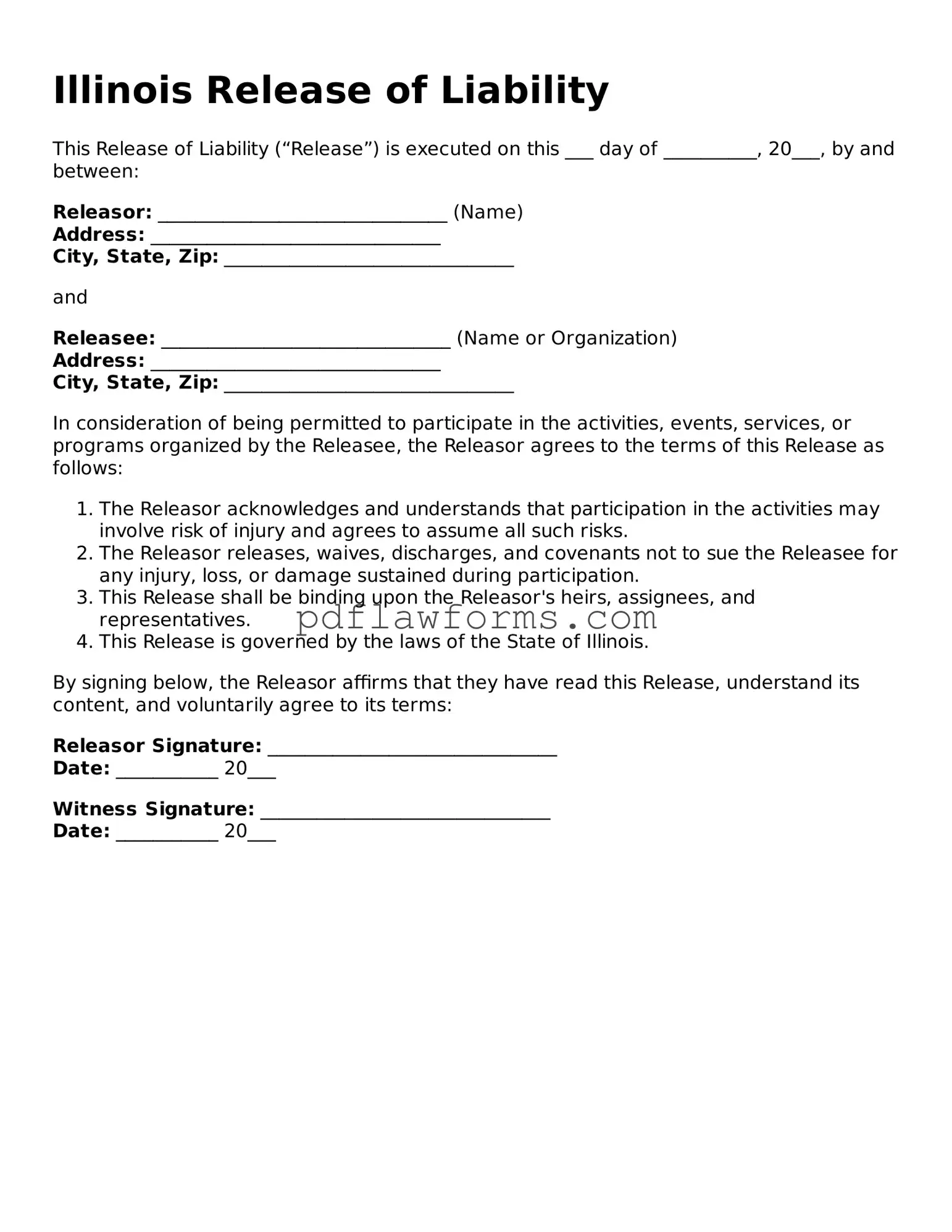Release of Liability Form for the State of Illinois
The Illinois Release of Liability form is a legal document designed to protect individuals and organizations from claims resulting from injuries or damages that may occur during specific activities. By signing this form, participants acknowledge the risks involved and agree to relinquish their right to sue for any potential injuries. It is essential to understand the implications of this document before engaging in any activity that requires its completion. Fill out the form by clicking the button below.
Make My Document Online
